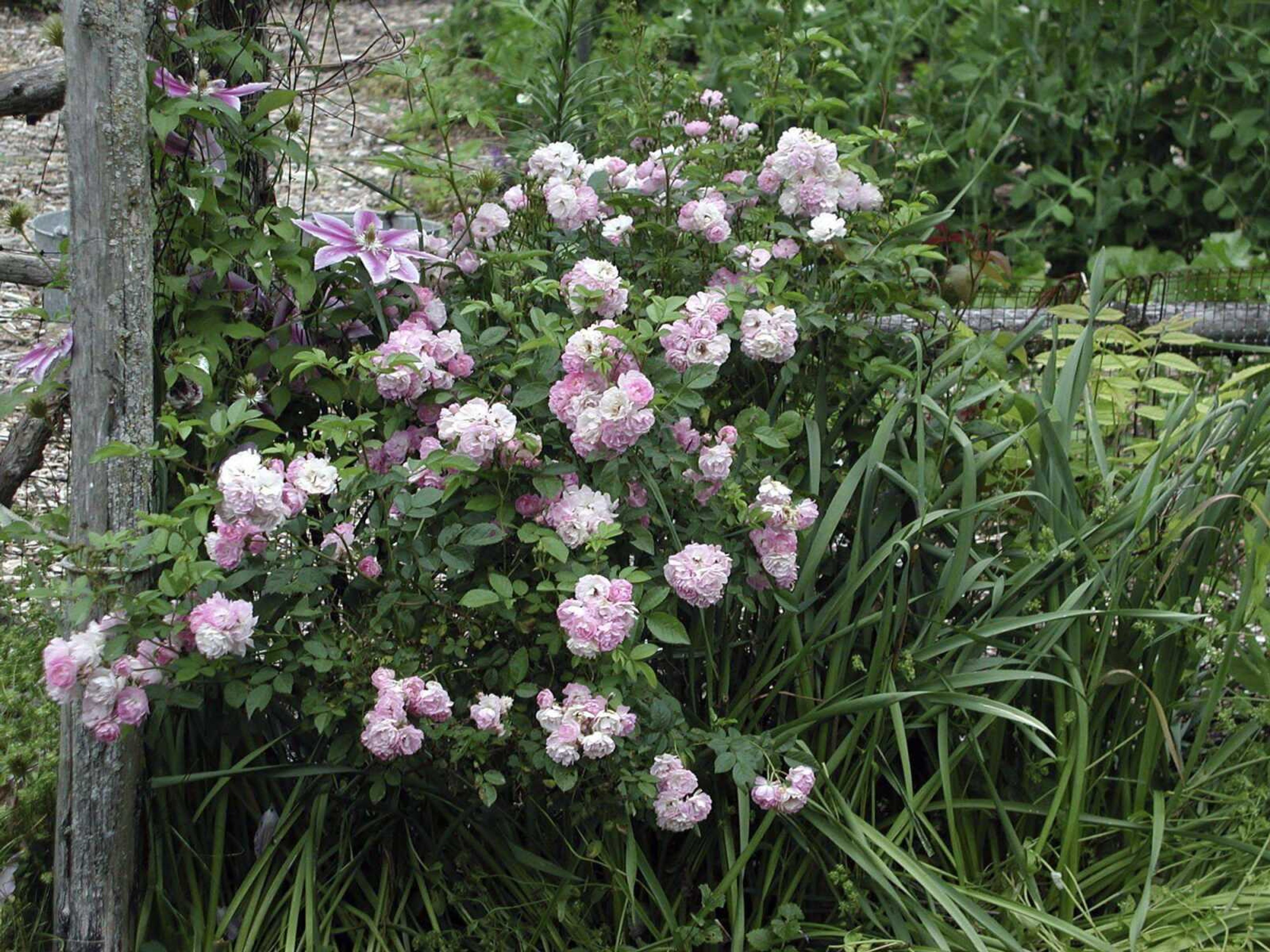Polyantha is a rose that keeps on giving
There's a rose that week after week, since spring, has been decked out in pretty pink blossoms. Even going into fall, the plant is covered with hopeful flower buds, many of which are prodded open on balmy days. Polyantha is obviously not your average rose...
There's a rose that week after week, since spring, has been decked out in pretty pink blossoms. Even going into fall, the plant is covered with hopeful flower buds, many of which are prodded open on balmy days.
Polyantha is obviously not your average rose.
The usual ills, such as blackspot or Japanese beetles, do little damage to Polyantha. Her leaves remain almost as perky green in fall as they were in early summer. And no need to coddle this plant through winter in a Styrofoam hut or with mulch heaped around its base.
Polyantha's ancestor originated in France in 1860 as a seedling of the often scorned multiflora rose. You know this shrub, popping up everywhere, threatening to engulf fields and even some backyards with its giant, thorny canes and small white blossoms. (OK, the flowers are pretty.)
M. Guillot, a rose breeder, had planted seeds of a climbing multiflora rose, and found in the offspring plants bearing double pink flowers. All the plants produced sterile blooms, except one. When this one plant's seeds were planted, its offspring, Polyanthas, were short, compact plants that bloomed the whole season.
Yes, Polyantha blossoms are small, less than an inch across, but they make up for their size with their abundance. The flowers are borne in large sprays that decorate the plant in pink through much of the summer. Not the traffic-stopping pink of Hybrid Tea roses, but a soft, pastel pink that calls to mind, along with Polyantha's blowsy form, old-fashioned roses of cottage gardens.
The petals are white at their bases, and pollen-laden stamens paint a dab of yellow at the center of each blossom. The blossoms fade almost white with age, so the different aged flowers create waves of color over the plant. And can you detect a slight fragrance from the blossom? Yes!
There's no science or art to pruning Polyanthas. Take your choice. Lop the whole plant to within a few inches of the ground and sacrifice the very earliest blossoms but keep the plant smaller. Or don't prune at all; the plant still never grows more than about 3 feet high.
Although generally overlooked by gardeners, Polyanthas have not been overlooked by rose breeders. In 1930, a Polyantha was crossed with a Hybrid Tea rose, and thus originated what are today known as Floribunda roses. Floribundas get their blossom shape from the Hybrid Tea but their hardiness, floral abundance, compactness and disease resistance from the Polyantha.
Although Polyanthas have mostly been used to breed other roses, there are a few Polyantha varieties. The best known is The Fairy, followed closely by China Doll. Marie Pavie is another variety, notable for being thornless, with creamy white blossoms. Zenaitta's blossoms are deep red, and the rose pink ones of Mignonette cluster in sprays of 50 or more.
Besides buying a plant, another way to get started with Polyantha is to just plant seeds, which sprout quite readily. Ideally, plant the seed -- or seeds, just for insurance -- in a small flowerpot of potting soil. Water and keep the pot in a cool place for a couple of months. The seeds might sprout by then, surely soon after you move the plant to a warmer location. Give the seedling plenty of bright light -- outdoors when weather is mild or in a sunny window if the weather is cold -- as long as it has leaves.
Once you have one plant, it can become many new plants from cuttings. With care, you can get almost 100 percent of Polyantha cuttings to take root, especially if the cuttings are taken just before growth begins. Just stick 4- to 6-inch pieces of stem into pots of moist soil and keep in a partially shaded location. Once rooted, pot up each plant and move it into the sun. As a plants grows, plant it out to the garden or move it into a larger pot.
A particularly cheery association for Polyantha is growing shoulder to shoulder with a large-blossomed, sparse-flowering, cottagey rose such as Bibi Maizoon. Polyantha's ongoing show of small, pink flowers provides delightful background "music" for Bibi Maizoon's corpulent, pink and heavily fragrant blossoms, which are too few and far between.
Connect with the Southeast Missourian Newsroom:
For corrections to this story or other insights for the editor, click here. To submit a letter to the editor, click here. To learn about the Southeast Missourian’s AI Policy, click here.









